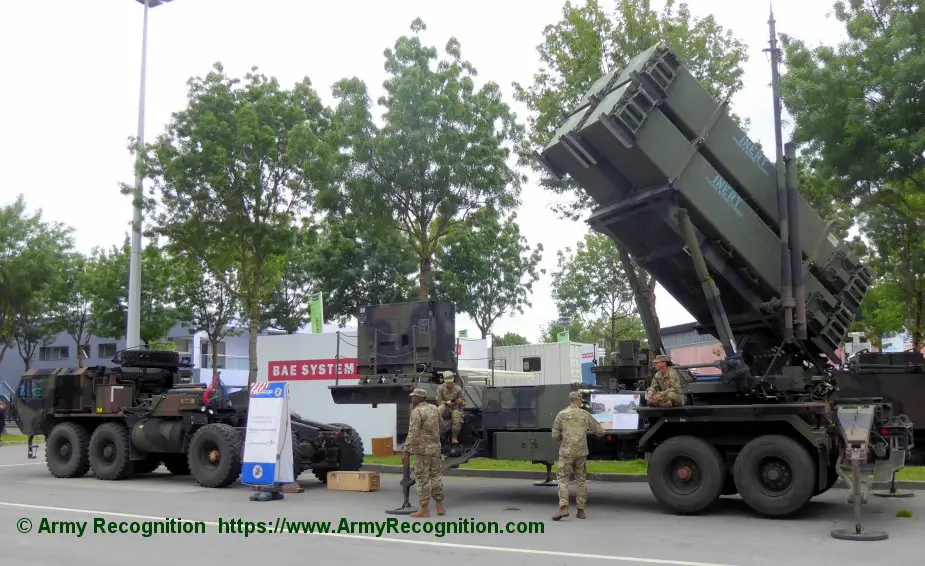Breaking news
The Netherlands: Patriot Recapitalization (RECAP).
The U.S. State Department has made a determination approving a possible Foreign Military Sale to the Netherlands of four Netherlands Patriot Fire Units for an estimated cost of $105 million. The Defense Security Cooperation Agency delivered the required certification notifying Congress of this possible sale today.

Patriot missile launcher at Eurosatory 2018 (Picture source: Army Recognition)
The Netherlands has requested Recapitalization (RECAP) of four Netherlands Patriot Fire Units. RECAP includes Radar Sets (RS), Radar Digital Processors (RDP), Engagement Control Stations (ECS), Information and Coordination Central (ICC), Modem Man Stations (MMS), Launching Stations, and Post Deployment Build (PDB)-8 upgrades along with parts, tools, technical and engineering assistance, support services, testing, and other related elements of logistics and program support, which will produce fire units at the Configuration 3+ capability. The total estimated program cost is $105 million.
The MIM-104 Patriot is a surface-to-air missile (SAM) system, the primary of its kind used by the United States Army and several allied nations. Patriot uses an advanced aerial interceptor missile and high performance radar systems. The Patriot system is modular and highly mobile. A battery-sized element can be emplaced in less than 1 hour. Patriot systems have been sold to Taiwan, Egypt, Germany, Greece, Israel, Japan, Kuwait, the Netherlands, South Korea, Saudi Arabia, United Arab Emirates, Romania and Spain. Poland hosts a battery of Patriot launchers in Morag since 24 May 2010.
The role of the PATRIOT is to defend against airborne threats as part of an integrated air and missile defence system. Notable characteristics of the PATRIOT system include a short response time, the ability to engage multiple targets simultaneously, good ground mobility, and the ability to resist electronic jamming. The first PATRIOT air defence systems were first deployed by U.S. Forces in the mid-1980s. During the first Gulf War, it was used to defend against the Iraqi Scud missile threat.
The PATRIOT system has evolved over the years as the threat has changed and technology has advanced. The current PATRIOT variants are equipped with advanced interceptor missiles and high performance radar systems. PATRIOT stands for “Phased Array Tracking Radar to Intercept on Target”. The role of the PATRIOT is to defend against airborne threats as part of an integrated air and missile defence system. Notable characteristics of the PATRIOT system include a short response time, the ability to engage multiple targets simultaneously, good ground mobility, and the ability to resist electronic jamming. The first PATRIOT air defence systems were deployed by U.S. Forces in the mid-1980s. During the first Gulf War, it was used to defend against the Iraqi Scud missile threat. The PATRIOT system has evolved over the years as the threat has changed and technology has advanced. The current PATRIOT variants are equipped with advanced interceptor missiles and high performance radar systems. PATRIOT stands for “Phased Array Tracking Radar to Intercept on Target”.


























